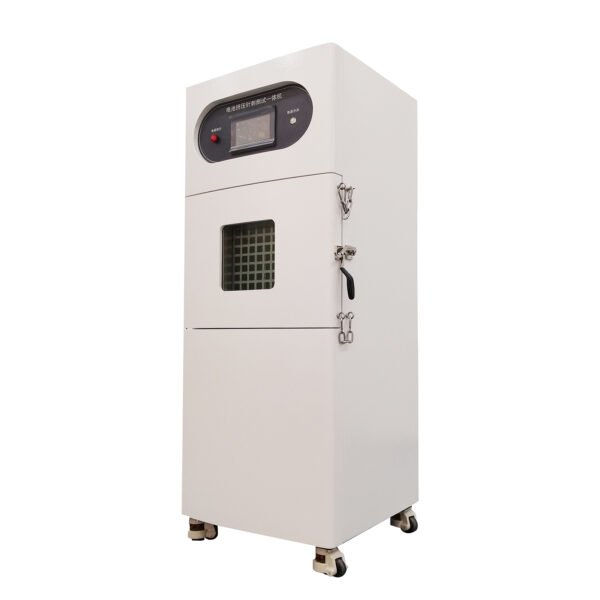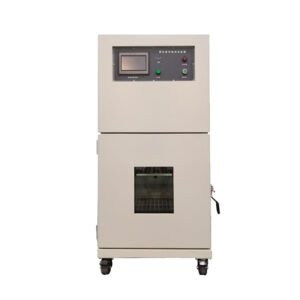1、 Обзор продукции:
The battery squeezing and needle punching integrated machine is suitable for simulating the situation where various types of batteries are subjected to squeezing and puncture during use, transportation, storage, or disposal of household waste. The extrusion direction of the extrusion test should follow the following rules: a battery should only be extruded once, and the battery is considered qualified if it does not explode or ignite.
For cylindrical batteries, the longitudinal axis of the squeezed battery should be parallel to the two flat plates of the squeezing device;
2. For square and soft pack batteries, only squeeze the wide surface of the battery;
3. For coin or button type batteries, squeeze them in a way that the upper and lower planes of the battery are parallel to the flat plate.
Test method:
Squeezing test: After fully charging the battery according to the prescribed test method, place the battery in two planes and squeeze it perpendicular to the direction of the electrode plate. Apply a squeezing force of 13KN+0.78KN between the two plates. Once the pressure reaches its maximum value, the compression test can be stopped, and the battery must not experience external short circuits during the test.
The battery should not catch fire or explode.
Needle puncture test: The needle puncture test should be conducted in an environment of 20 ℃± 5 ℃. The battery should be placed flat on the fixture, and a corrosion-resistant steel needle with a diameter of φ 3- φ 8mm should be inserted into the center position of the battery surface at a speed of 10mm/s-40mm/s. The test results should be observed at any time. If the battery does not explode or ignite, it is considered qualified. The battery compression testing machine complies with standards such as GB31241-2014.
2、 В соответствии со стандартом:
GB 31241-2022 "Требования безопасности к литий-ионным батареям и аккумуляторным блокам для портативных электронных устройств"
MT/T 1051-2007 "Литий-ионные аккумуляторы для шахтных ламп"
SJ/T 11169-1998 (UL1642:1995) "Стандарт безопасности для бытовых и коммерческих аккумуляторов"
YD 1268-2003 "Требования безопасности и методы испытаний литиевых батарей и зарядных устройств в портативных устройствах мобильной связи".
GB/T 19521.11-2005 "Спецификация безопасности для проверки опасных характеристик опасных грузов литиевых батарей"
GB/T 18287-2013 Общая спецификация литий-ионных батарей для сотовых телефонов
SJ/T 11170-1998 (UL2054:1997) "Стандарт безопасности для бытовых и коммерческих аккумуляторов"
Рекомендации ООН 38.3 по перевозке опасных грузов - Руководство по испытаниям и критериям, часть III, раздел 38.3
UL 1642 "Стандарт литиевых батарей" 2054 "Бытовые и коммерческие батареи"
IEC62133-2012 "Аккумуляторные батареи и батарейные блоки, содержащие щелочные или некислотные электролиты - Требования безопасности к герметичным батареям и батарейным блокам для портативных устройств"
GB/T 8897.4-2008 (IEC 60086-4:2007) "Первичные батареи - Часть 4: Требования безопасности для литиевых батарей".
YDB 032-2009 "Резервный литий-ионный аккумулятор для связи"
YD/T 2344.1-2011 "Литий-железо-фосфатные аккумуляторы для связи - Часть 1: Встроенный аккумуляторный блок".
GB/T 21966-2008 (IEC 62281:2004) "Требования безопасности к литиевым первичным и вторичным батареям при транспортировке"





